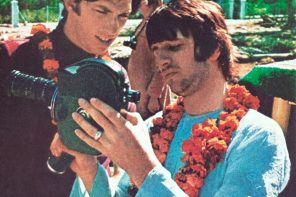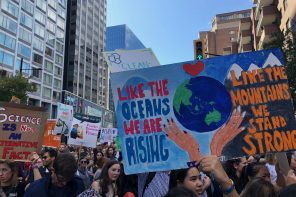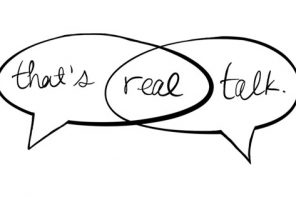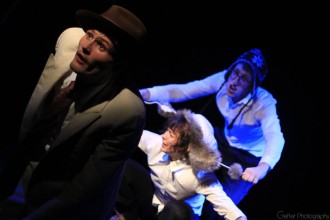The beauty and humanity of documentary photography embody a pursuit of curiosity and intimacy.
Every day, the number of photos that we take and see seem endless. We’re constantly scrolling through images on our phones and because of their sheer amount, few really manage to capture our attention. Those that have some inherent feeling that resonates with us, making us reflect and appreciate their beauty. Documentary photography acts as a mirror to the world, showing us what we look like from a different perspective, and invoking feeling. The beauty and humanity of documentary photography embody a pursuit of curiosity and intimacy.
This thread of intimate human connections has leaked into social media platforms and has attracted thousands of followers. I had the opportunity to meet with local creator and photographer, Mikael Theimer, the founder of Portraits de/of Montreal who, inspired by the hugely successful page Humans of New York, quit his job in marketing to pursue a career in photography. This particular project of his, and its partner project, “Humans of the Street”, have attracted a lot of attention, much like others similar in nature. So, what is it about this kind of photography that speaks so profoundly to so many of us? Why does documentary photography, in its simplest and most accessible form, have such a stirring effect on us?
Mikael’s Portraits de/of Montreal uses photography and short interviews as a “way in” to intimacy and his social media platforms as a way to make this “in” visible. Documentary photography has a unique capacity to bring out powerful human emotion, and when it is applied in our everyday lives, we are surprised to find that these same intimate moments exist. In Mikael’s photos, he focuses almost completely on raw intimacy. He credits the close proximity of his camera with “break[ing] the mask”. This element of unveiled emotion and expression adds something more than simply reading that same story without the image. Everything he does with his camera “is about connecting with other human beings… it is always at the heart of every project” and this particular focus sets him apart from other photographers. The beauty of this intimate connection is visible in the photos; the words it accompanies resonate with us and speak to our shared experiences.
There are so many people doing the most incredible things, especially in Montreal, and if we’d only get out of our comfort zones for a little while and strike up a little conversation, maybe we could let ourselves be affected.
While it’s so easy to get wrapped up in ourselves and our own lives, platforms like Portraits de/of Montreal make us ask ourselves: what are we missing out on? What connections could have been made if we’d just simply asked ourselves this question? It is this same curiosity and longing for openness and connectivity that made pages like this one possible. Just as Mikael was “envious of how [Brandon, the creator Humans of New York] seemed to be able to start a conversation with just about anyone in the street and make that conversation meaningful – to both the participants,” we, as viewers, feel this same urge. There appears to be so much to be gained and learned, be that life lessons, positionality checks, or even a new friend, simply by opening ourselves up. There are so many people doing the most incredible things, especially in Montreal, and if we’d only get out of our comfort zones for a little while and strike up a little conversation, maybe we could let ourselves be affected.
For Mikael, the project was challenging, “and it turns out [he] could, and not only [he] could but [he] realized how fulfilling it was… how enriching it was.” Once he’d overcome the initial fear, it became clear that the “hard part was just convincing yourself to do it.” This curiosity and genuine interest in human connection is universal. All it takes is action, the move to do something with this curiosity. Documentary photography really is a shift from a curiosity to know people or to discover that they exist, to an encounter that is to be shared. Mikael and other documentary photographers are just as human as all of us; buried in fears and insecurities. Maybe this is what makes documentary photography so appealing. These encounters give us access to intimate stories from complete strangers, and in doing so, they remind us again and again of the complex interiority of every person. The ordinariness of documentary photography taken on the street shows us the possibility of an encounter, if we only stopped being afraid for a moment, if we only stopped running away from a possible connection.
Going further, Mikael expresses that “it is easier to be entirely, completely true, completely yourself with a complete stranger” given the absence of an expectation of who you’re supposed to be. It is when “you convince yourself that you can break that pattern people expect from you” that we are reminded of the endless possibilities we are capable of. The intoxicating nature of the possibility for connection empowered Mikael to start this page, which not only “profoundly changed [him]”, but initiated change in the people who were touched by his work, in whatever shape or form that may have taken. Documentary photography, as difficult as the practice is, brings out something that feels untapped within its viewers as well. For Mikael, it “isn’t so much the photography but it’s the things [he’s] photographing, the people [his] camera allows [him] to meet, the places it takes [him], the situations it puts [him] in, the stories it uncovers.” These intimate encounters, although mediated by social media, resonate with us. They reveal the complexities of the person, the beauty of life’s messiness and the expansive potential for human connection. By engaging with documentary photography, we witness how much meaning there is to be made, how much there is out there to be touched and felt. We are called to meet this intimacy with that of our own.
Genuine interest and curiosity have the power to bring out that which is unsaid and hidden with only a little bit of courage. The beauty of documentary photography, even just “a completely random interaction with a perfect stranger” that warranted a real human connection, is something that not all of us may encounter in our everyday lives. For this reason, the intimacy of these photos and these stories sticks with us and motivates us to, in whatever way we can, act on our curiosity, for the possibility of something more.








